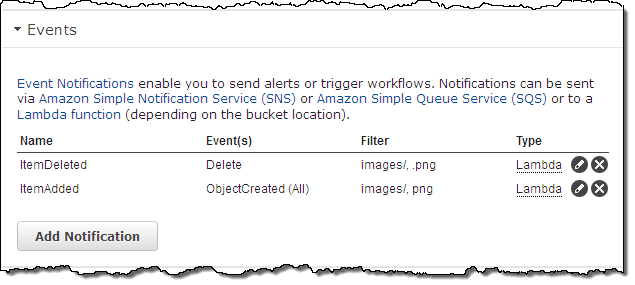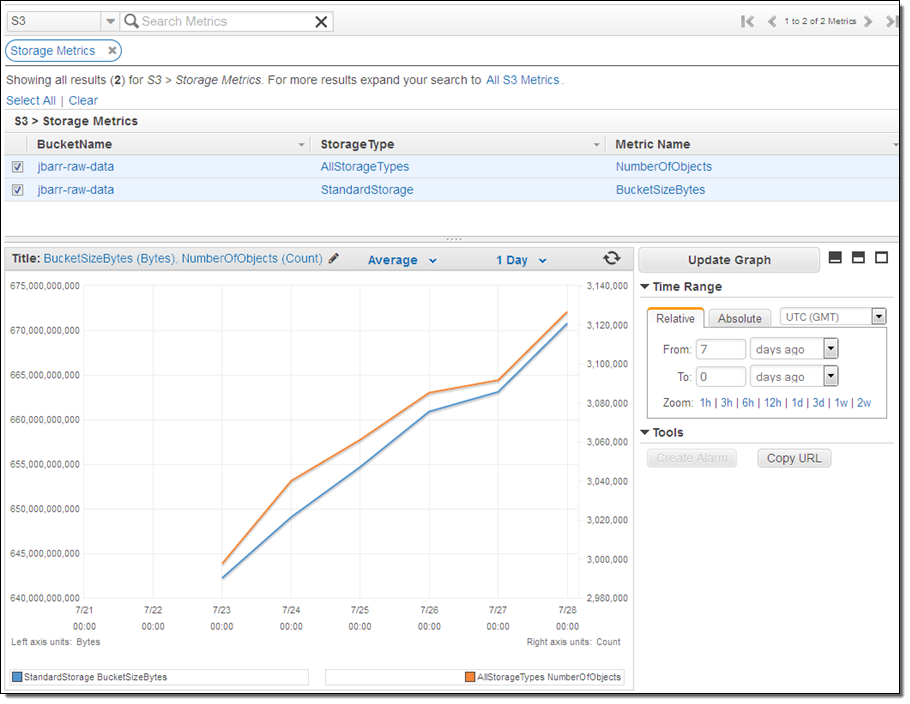We launched Amazon Simple Storage Service (S3) in the spring of 2006 with a simple blog post. Over the years we have kept the model simple and powerful while reducing prices, and adding features such as the reduced redundancy storage model, VPC endpoints, cross-region replication, and event notifications.
We launched the event notification model last year, with support for notification when objects are created via PUT, POST, Copy, or Multipart Upload. At that time the notifications applied to all of the objects in the bucket, with the promise of more control over time.
Today we are adding notification when objects are deleted, with filtering on prefixes and suffixes. We are also adding support for bucket-level Amazon CloudWatch metrics,
Notification Enhancements
You can now arrange to be notified when an object has been deleted from an S3 bucket. Like the other types of notifications, delete notifications can be delivered to an SQS queue or an SNS topic or used to invoke an AWS Lambda function. The notification indicates that a DELETE operation has been performed on an object, and can be used to update any indexing or tracking data that you maintain for your S3 objects.
Also, you can now use prefix and suffix filters to opt in to event notifications based on object name. For example, you can choose to receive DELETE notifications for the images/ prefix and the .png suffix in a particular bucket like this:

You can create and edit multiple notifications from within the Console:

CloudWatch Storage Metrics
Amazon CloudWatch tracks metrics for AWS services and for your applications and allows you to set alarms that will be triggered when a metric goes past a limit that you specify. You can now monitor and set alarms on your S3 storage usage. Available metrics include total bytes (Standard and Reduced Redundancy Storage) and total number of objects, all on a per-bucket basis. You can find the metrics in the AWS Management Console:

The metrics are updated daily, and will align with those in your AWS bill. These metrics do not include or apply to S3 objects that have been migrated (via a lifecycle rule) to Glacier.
Available Now
These features are available now and you can start using them today.
— Jeff;
No comments:
Post a Comment